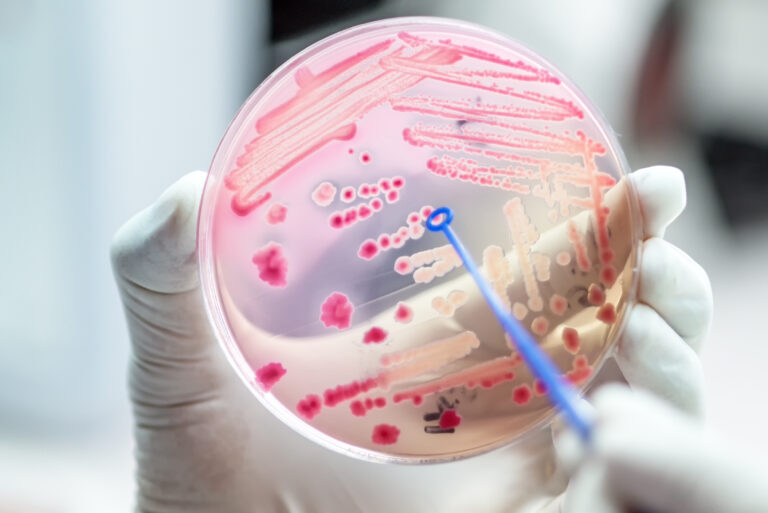
Healthcare providers are working harder than ever to give patients the high-quality, highly effective care they deserve. Even as they battle obvious obstacles like budget restrictions, staffing shortages, and increased service demand, one of the fiercest fights is being waged against an invisible enemy.
Healthcare-associated infections (HAIs) develop while receiving treatment and impact more than a million people annually, resulting in 99,000 annual patient deaths and billions of dollars in added costs for healthcare providers. They pose an often-unseen but ever-present risk to patient outcomes, demanding an immediate response.
Unfortunately, antimicrobials, the most common weapons used to fight HAIs, are becoming less effective as antimicrobial resistance renders these techniques ineffective. The World Health Organization (WHO) has deemed antimicrobial resistance “one of the top global public health and development threats,” impacting patients in all countries and at all income levels.
Keep reading to explore the critical challenges of antimicrobial resistance in healthcare settings and the innovative solutions required to combat it.
What’s Causing Antimicrobial Resistance
Antimicrobial resistance, the ability of microbes to evolve and withstand the effects of disinfectant techniques, is a global health crisis with local ramifications. It can also be attributed to local causes as individual decisions undermine their effectiveness.
Several factors contribute to this crisis, including:
#1 Overuse of Antibiotics
Antibiotics were a breakthrough when Paul Ehrlich, a German physician, discovered the first antibiotic in 1909. Alexander Fleming’s accidental discovery of Penicillin 20 years later ushered in an era of technological advancement that gave medical professionals the upper hand against microbes. It was a truly world-changing discovery.
As a recent study published in Healthcare explains, “Antibiotics are among the most important discoveries of the 20th century, having saved millions of lives from infectious diseases.” However, the overuse and overprescription of antibiotics have accelerated antimicrobial resistance.
This isn’t a new development. In 2018, the National Library of Medicine reported, “Antibiotic consumption is a primary driver of antibiotic resistance,” noting that “The association between antibiotic consumption and resistance is well documented across spatial and temporal scales at individual hospitals, nursing homes, primary care facilities, and communities, as well as across countries.”
Simplifying the connection between antibiotics and antimicrobial resistance, the Mayo Clinic writes, “Each time antibiotics are used, bacteria have another chance to adapt, potentially leading to antibiotic resistance, where antibiotic drugs become less effective or ineffective for some infections.”
#2 UV Disinfection Techniques
UV disinfection is an imprecise and often ineffective technique for eliminating HAIs. Notably, UV requires a direct line of sight to be effective while requiring precise positioning and elongated exposure to kill pathogens. It may also make antimicrobial resistance more pernicious.
Early assessments suggest there may be a connection between UV disinfection and antimicrobial resistance. As The Infection Prevention Strategy (TIPS) reports, “Over time (many growth cycles), it is anticipated that microbes can develop a certain resistance to UV light, especially if they are exposed for a long enough time with no lethal dose. It is worthwhile noting that UV radiation-resistant microbial communities are already found in hospitals (PubMed, 2023). Consequently, UV light used for disinfection purposes will be less and less effective.”
#3 Inadequate Disinfection Techniques
Inadequate infection prevention and control measures in healthcare facilities can facilitate the spread of resistant bacteria.
For instance, manual cleaning regimens present several shortcomings, including:
- Improperly mixing cleaning concentrates
- Inconsistencies and human error
- Indirect exposure to harmful chemicals contributing to eye and respiratory problems
As a result, the National Library of Medicine posits that “neglecting proper infection control protocols can result in the dissemination of communicable diseases and entail grave ramifications.”
In response, the publication warns, healthcare providers must implement hygiene best practices and “efficacious infection control measures” to mitigate their spread and prevalence.
Stopping the Spread With the Right Technology
These factors are amplifying the risk and prevalence of antimicrobial resistant pathogens.
The stakes are incredibly high. Every year, nearly five million people die because of antimicrobial resistance. What’s more, therapeutic options for infections caused by antimicrobial-resistant bacteria are limited, resulting in significant morbidity and mortality with high financial impact.
Whole room fogging technology leveraging Hypochlorous acid (HOCl) is a highly effective way to reduce the risk of HAIs without increasing the risk of producing antimicrobial resistance.
According to the International Journal of Clinical Microbiology and Biochemical Technology, “One of the key advantages of HOCl is its ability to kill bacteria without promoting the development of antibiotic resistance.”
For example, Nevoa’s Stratus handheld fogger kills 99.9999 percent of pathogens in just one minute, including Staph, MRSA, and Pseudomonas — the leading causes of healthcare-associated infections (HAIs).
By lowering exposure to HAIs, healthcare providers reduce the need for antibiotic treatments while leveraging a disinfection solution that is more effective and consistent than UV or manual cleaning protocols.
Take Action With Nevoa
In the fight against healthcare-associated infections (HAIs) and the looming threat of antimicrobial resistance, healthcare providers are challenged to adopt innovative and effective solutions.
We don’t have to be passive in our adoption. We have the power to take decisive action in the fight against HAIs and antimicrobial resistance.
Nevoa’s technology can transform your infection prevention strategies and provide a safer environment for both patients and staff. Contact Nevoa today to join the cohort of healthcare providers committed to excellence in patient care and infection control.
